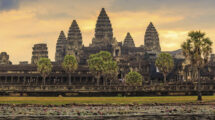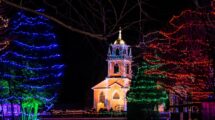Travel
By Mary Ann Simpkins
The medieval heart of Europe
Prague is one of Europe’s most beautiful cities. A visual delight of Romanesque chapels to Gothic cathedrals and Art Nouveau masterpieces intersected by cobblestoned squares. The Vltava River divides the Czech capital in two. Centuries of culture and often turbulent history line the narrow streets of this medieval heart of Europe. Its appearance barely changed by the Second World War and Soviet occupation. Although Americans did inadvertently bomb one section in 1945, killing hundreds of residents—they mistook Prague for the German city of Dresden (some 118 kilometres away).
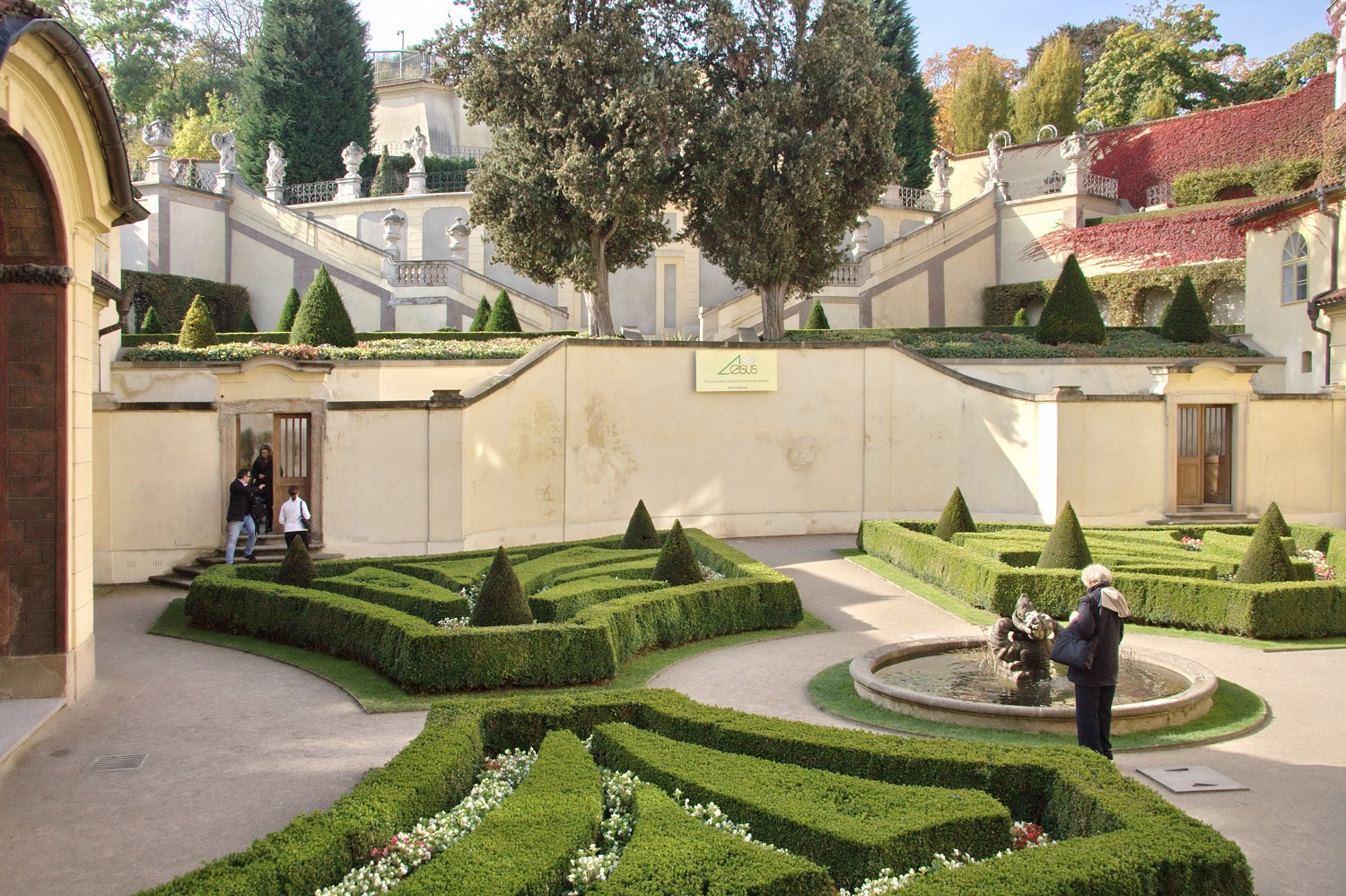
Prague Castle
Prague’s architectural splendour first blossomed under Charles IV who launched the city’s first Golden Age. In the mid-1300s, the King of Bohemia revitalized the royal palace erected for the first king around 880. Today, it’s the world’s largest castle complex. The collection of structures linked by internal courtyards sprawls over 43 hectares on a hill above the city. Charles IV also founded the castle’s St. Vitus Cathedral. Richly decorated inside and out, the impressive Gothic Cathedral’s 22 chapels contains one with the tomb of St. Wenceslas I (of Christmas carol fame) as well as the Crown Jewels and such relics as the arm of Saint Vitus. Two white stone steeples identify the palace’s oldest surviving church, the Renaissance-style St. George’s Basilica. Founded in 973 by Benedictine nuns, the monastery, now part of the National Gallery, exhibits 19thcentury Czech art and sculptures. The spark that ignited Europe’s Thirty Years War began in Prague Castle when Protestant Rights defenders threw three Catholics out a council room window in 1618. Their action gave us the word defenestration, meaning to toss someone out a window. Prague Castle remains
the seat of power, now for the Czech President. Trumpets and drums announce the daily noon Changing of the Guard ceremony. Sentries at the gates change hourly during the day. Vácalv Havel, the first President of the freed Czech Republic declared the guards’ khaki uniforms too drab. He commissioned Oscar-winning film designer Theodor Pišt k to create new uniforms reminiscent of the Czechoslovak Legionaries from the First World War. Alongside the castle, are three gardens. The Royal Garden, founded in 1534 and recreated in the English style of the 19thcentury with lemon trees and Renaissance-style fountain, fronts the purest example of Italian Renaissance architecture outside of Italy, Queen Anne’s Summer Palace.
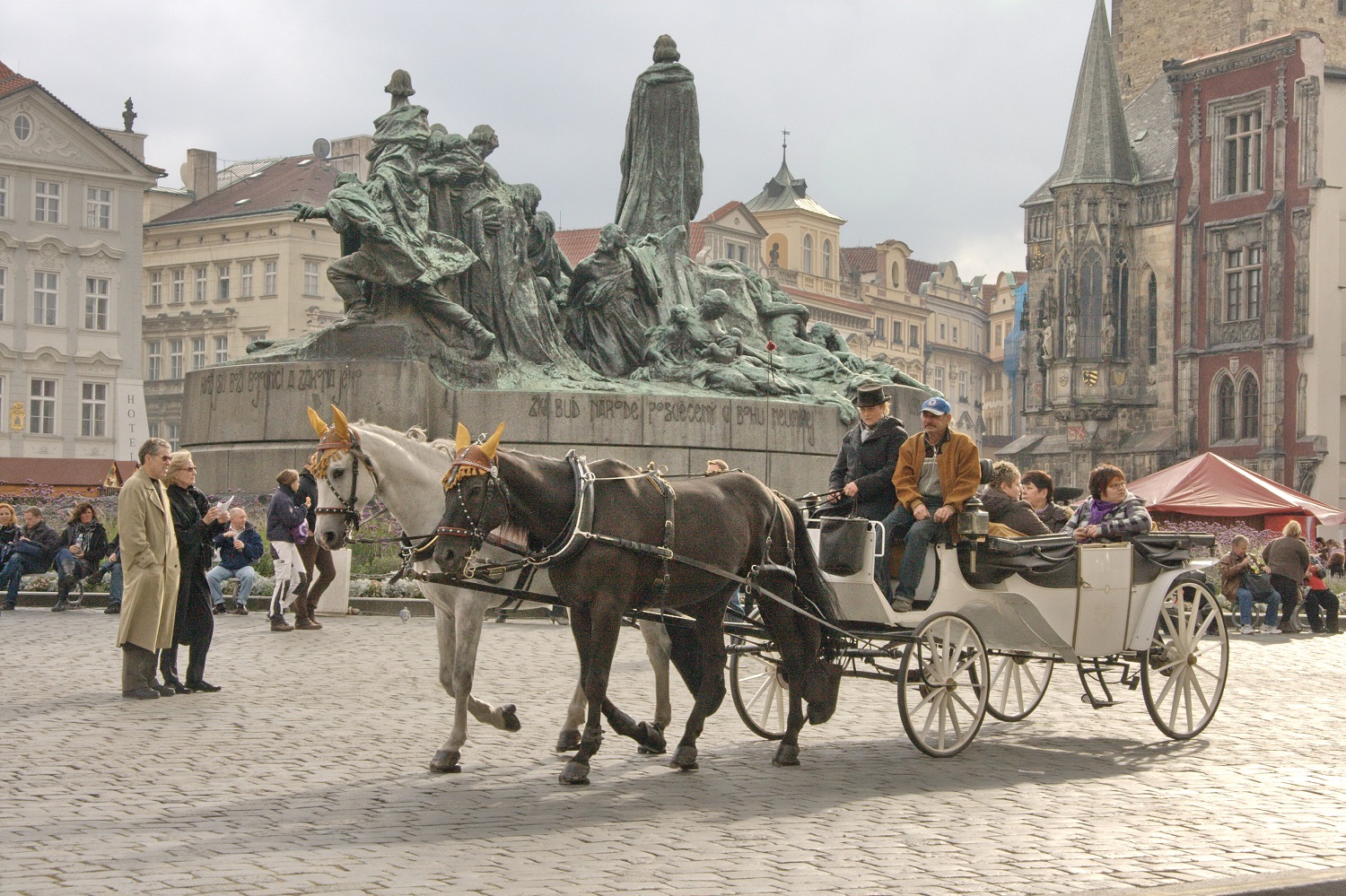
Lesser Town
Down the hill from the castle in Lesser Town, formerly a German enclave, the 18th-century Vrtbovska Gardens. Built for the palace of Prague Castle’s Chancellor, the secluded Italian-style Baroque
garden is an oasis of calm. Statues of ancient Roman gods and goddesses overlook the pool, aviary, and precisely designed flower beds. Descending further through Lesser Town’s narrow lanes brings you to native son Franz Kafka’s Museum. Statues of two men urinating into a pool in the shape of the Czech Republic identify the museum and hint at its contents.
In the museum, copies of Kafka’s manuscripts, documents, and a model of the torture machine from his story Penal Colony testify to his darkly paranoid and paradoxical work. The riverside museum sits near the Charles Bridge. Baroque-style statues of saints line the pedestrian bridge designed by the architect of St. Vitus for Charles IV. To cross in high season, you’ll have to dodge tourists, musicians, and market stalls. Fortified towers flank each end. Statues of Charles IV, St. Vitus, and Wenceslas IV glitter against the dark stone exterior of Old Town’s Bridge Tower. Climb 138 steps up the tower for all-encompassing views of the city.
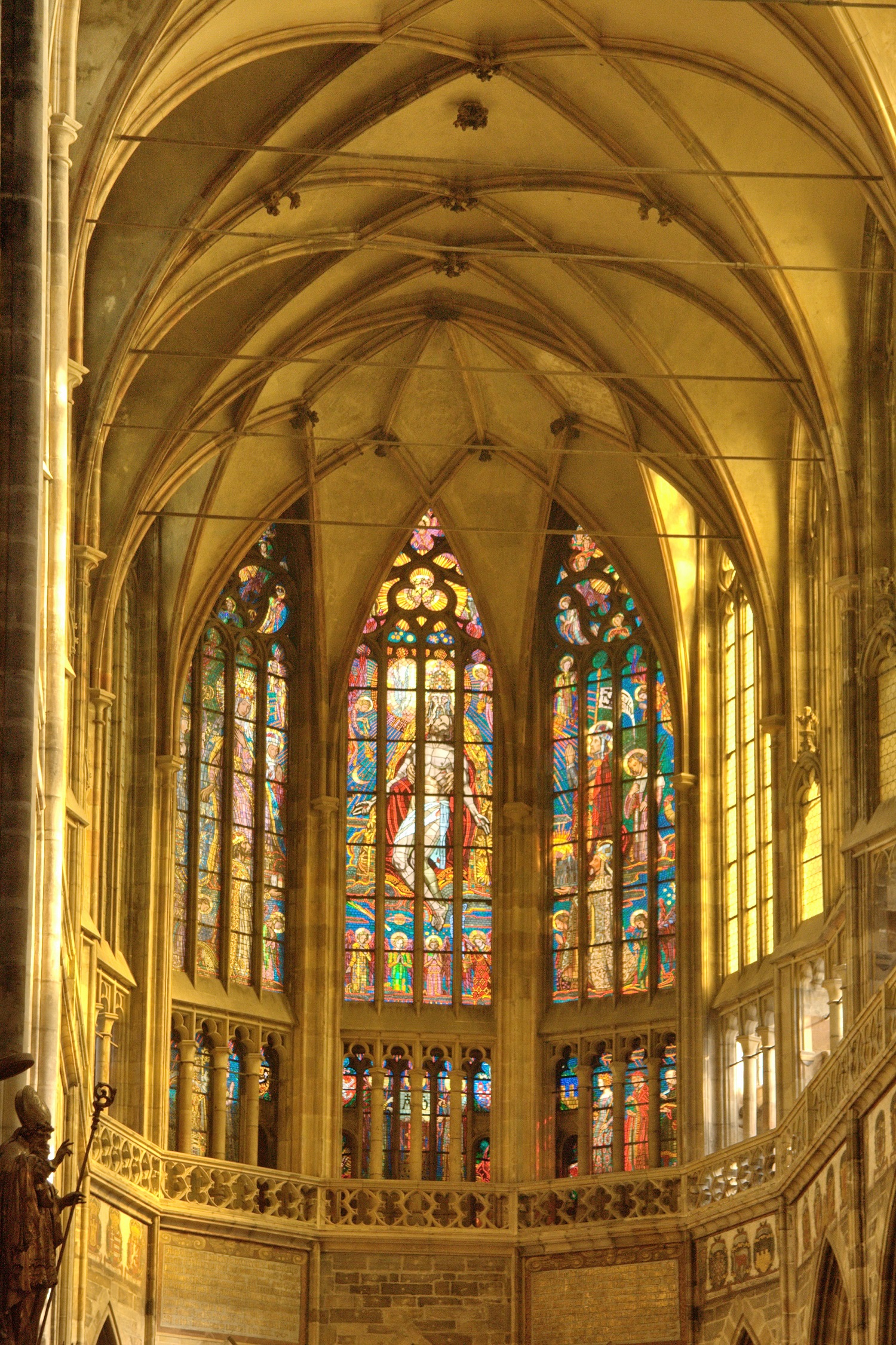
Old Town
Across the bridge, is Prague’s Old Town. Chartered in 1234, this once important trade route stop is a compact, easy-to-walk section filled with museums, theatres, shops, and the Jewish Quarter. Walls enclose the one-block Jewish cemetery, the grounds filled with thousands of graves dating back to 1439. Tombstones lean against each other. Authorities wouldn’t allow Jews to inter their dead anywhere else. They had to bury corpses standing up. Renaissance to Moorish style synagogues fill the quarter. Europe’s oldest active synagogue, the 13th-century early Gothic Old-New Synagogue is easily recognizable by its gabled roof and late Gothic cables. Supposedly, containing stones from Solomon’s Temple, the synagogue dominates the surrounding single-story homes from the Middle Ages. By the time of the Nazi occupation, 40,000 Jews were residing throughout the city. Austrian Emperor Josef II’s Edict of Tolerance in 1781 ruled Jews no longer had to live in the ghetto. During the reign of one architect of the Holocaust, Reinhard Heydrich, deporting Jews to death camps began. Today, the Jewish quarter remains much as it was before 1939. Hitler wanted the ghetto preserved as a museum of an extinct race. After two Czech paratroopers blew up Heydrich’s motorcade near the small town of Lidice, Hitler retaliated by ordering the liquidation of the town. Nazi soldiers shot 192 men: 300 women and children were shipped to concentration camps. Crowds congregate hourly from 8 a.m. to 8 p.m. at Old Town Hall’s Astronomical Clock. The clock striking the hours launches a politically incorrect medieval morality play. Statues of the Apostles and the evils of life appear—ranging from a preening vanity to an acquisitive, dancing Jew. After the Second World War, the horns and beard were removed from the moneybag-holding Jew. Known as “The City of 100 Spires,” Prague’s churches include Old Town Square’s St. Nicholas Cathedral. A baroque gem with marble columns topped with gold leaf and a large crystal crown chandelier the Russian Tsar gave to the Orthodox Church. Like many churches, it often opens for recitals and organ concerts. Numerous other concert halls and theatres testify to Prague’s rich cultural life. Mozart premiered Don Giovanni at the neoclassical Estates Theatre in 1767, claiming the Viennese didn’t appreciate his passion. A stained-glass canopy covers the entrance of the glorious Art Nouveau Municipal House. Lavished with sculptures, frescoes, and mosaics created by some 30 leading artists, the building houses the city’s largest concert hall. The Prague Symphony Orchestra frequently performs here. Guided tours are offered. Dine or snack in the café under sumptuous chandeliers. The first Bohemian composer to achieve worldwide recognition, Antonin Dvorak, premiered his opera “Rusalka” at the National Theatre, one of three venues for opera. The primary stage, the opulent neo-rococo Prague State Opera, occupies a site by another historic square, Wenceslas Square. The bronze figure of St. Wenceslas, lance held high, looks prepared to gallop down the hill from his position at the top of the square. Dominating the square, the National Museum. Bullet marks on its columns are reminders of the 1968 invasion by soviet
troops who thought the imposing museum was a government building. The country’s largest museum covers natural history to the arts. Other museums range from the Sex Machine Museum
showing old black and white erotic movies to the Museum of Communism. Among the recreations of this dark time was a stark secret police interrogation room.
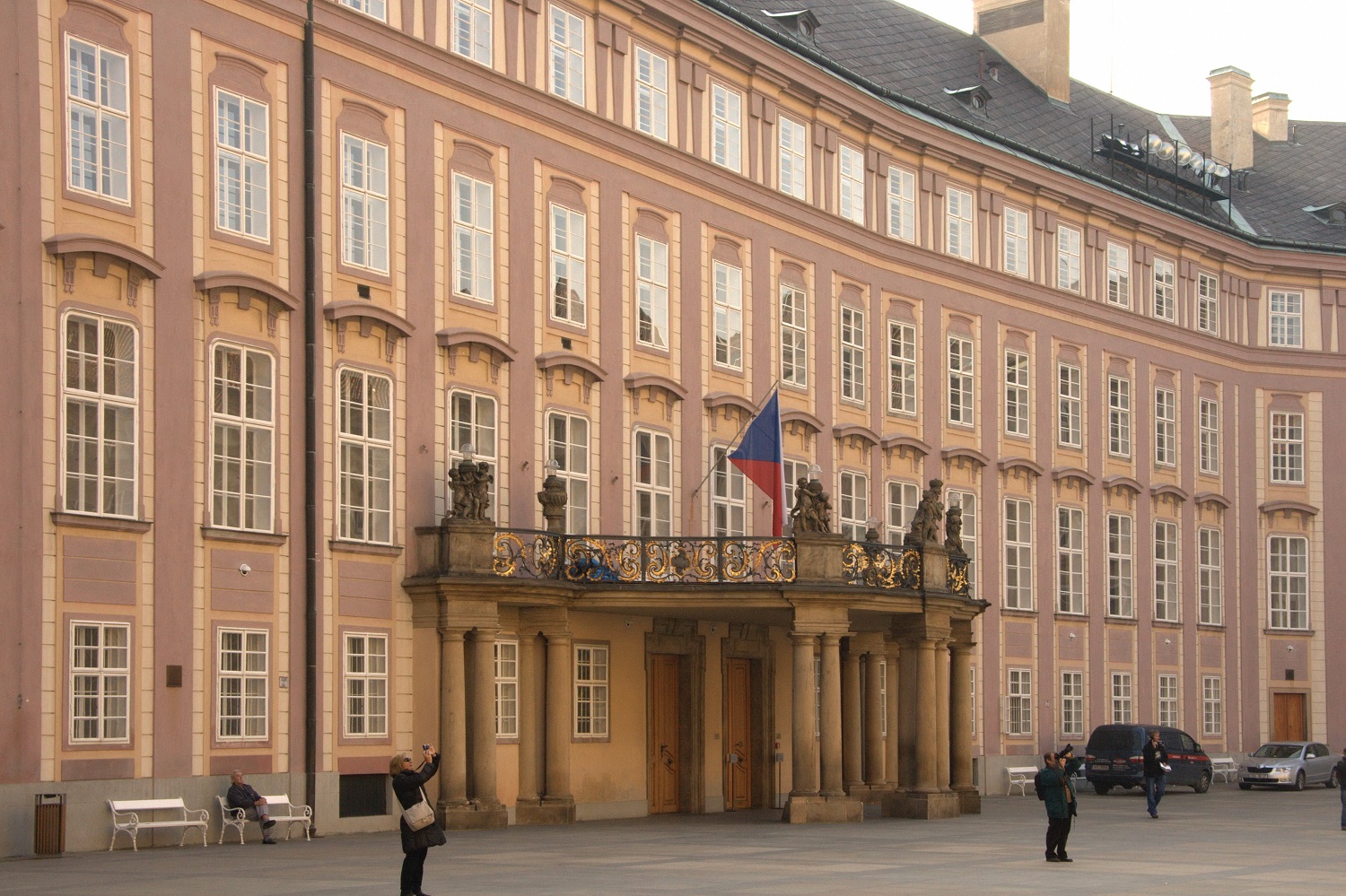
If you go
There are no direct flights to Prague from Canada.
Getting around
Most of central Prague is closed to vehicles. Central Prague is compact enough to visit by foot but you can also travel via the metro system, tram and bus.
More information
Czech Tourism: mzv.cz/toronto
Prague Tourism: prague.eu/en



